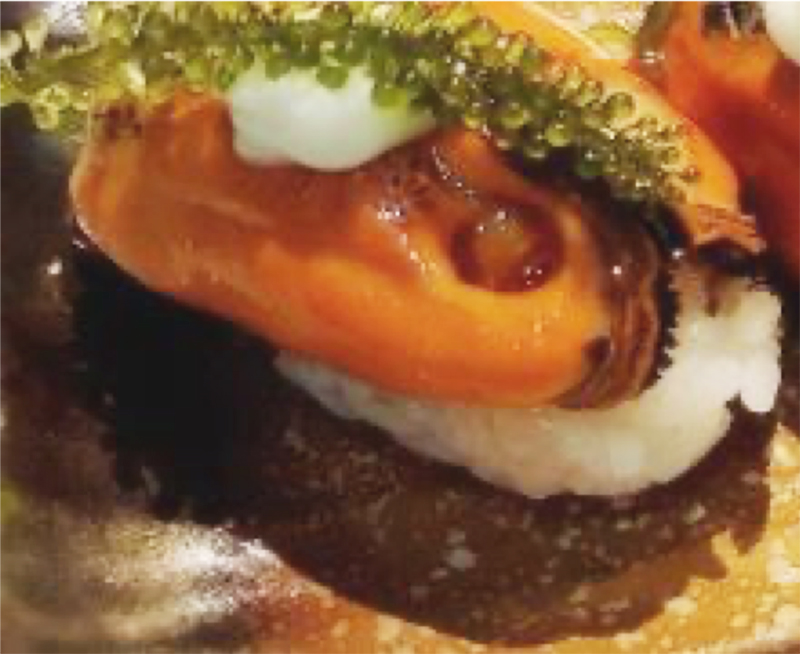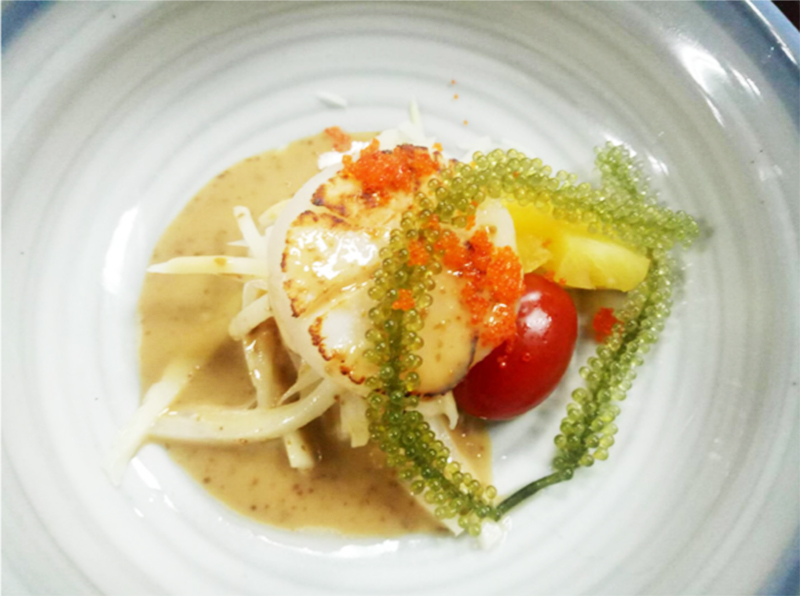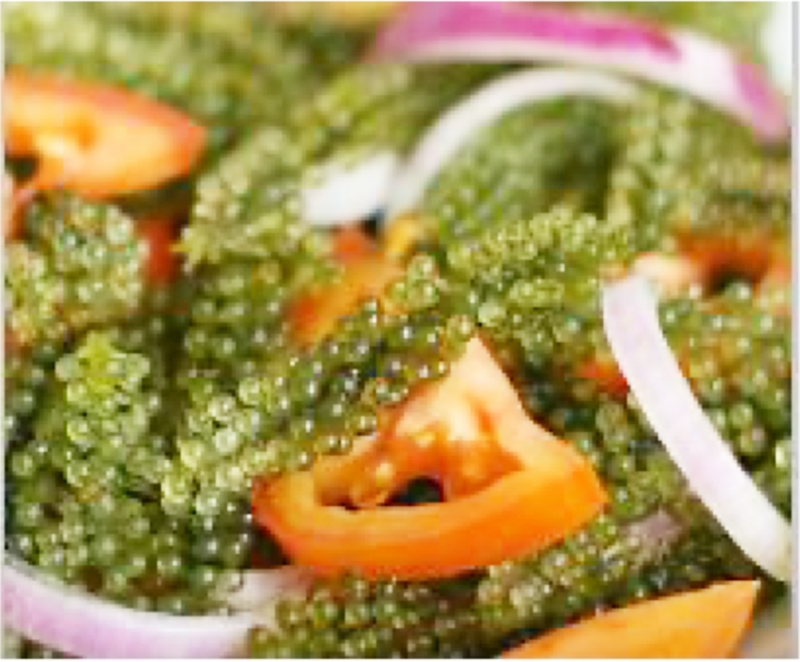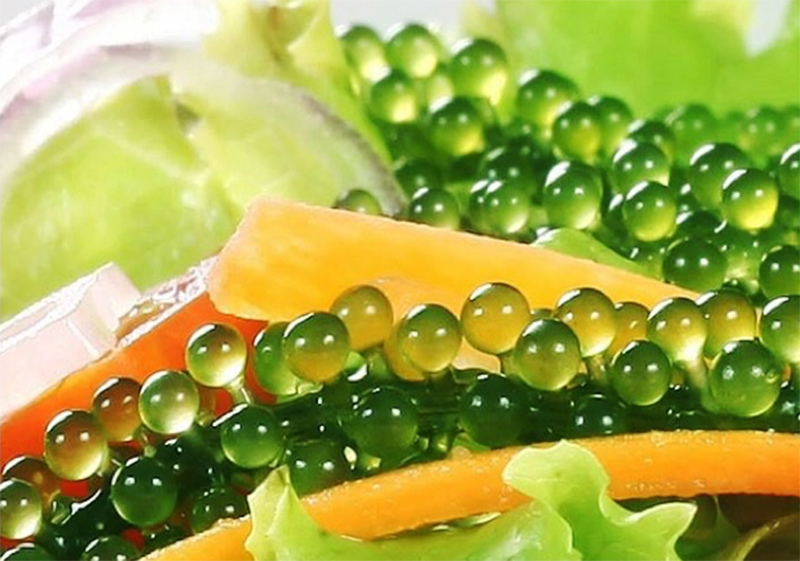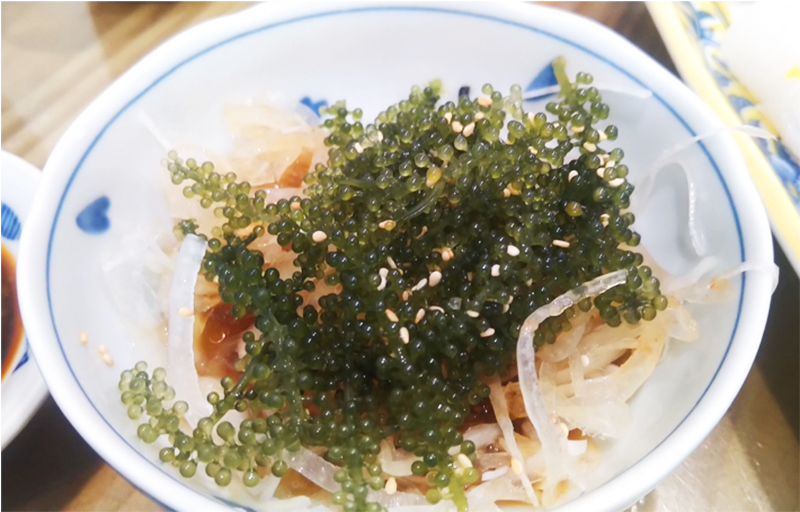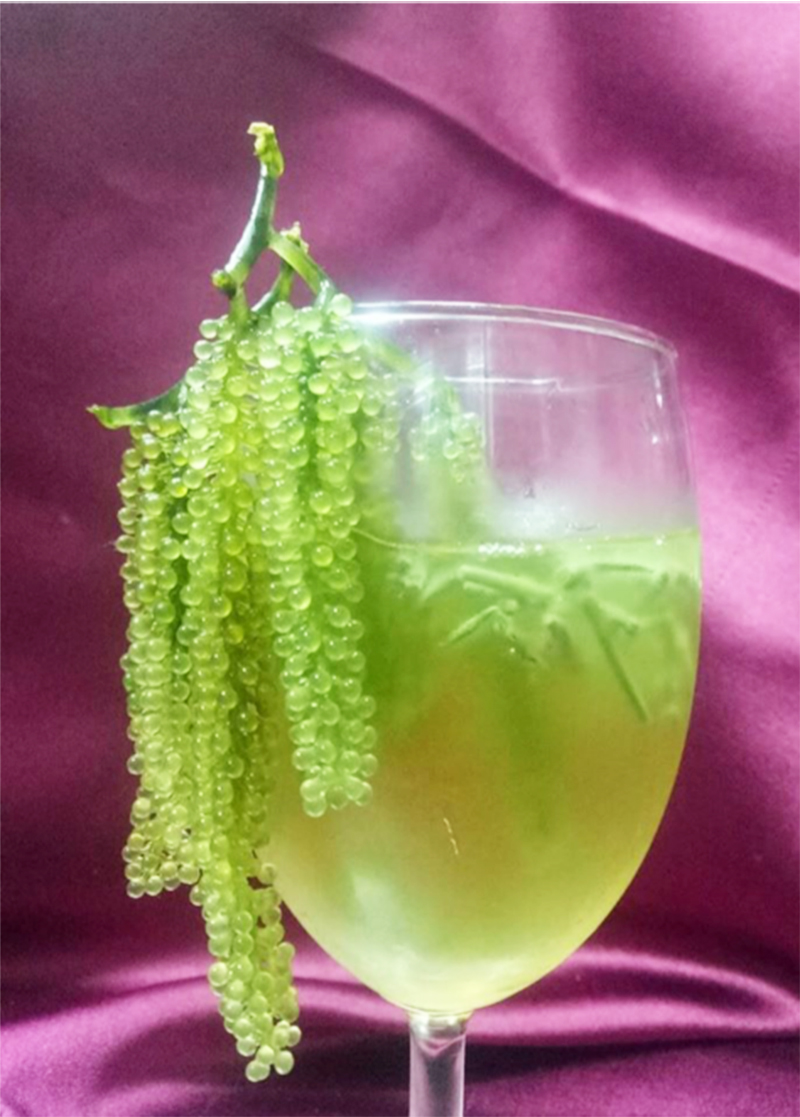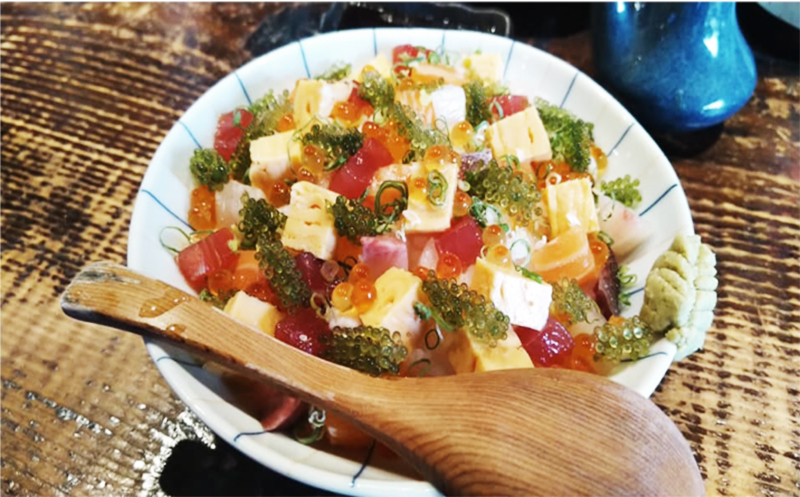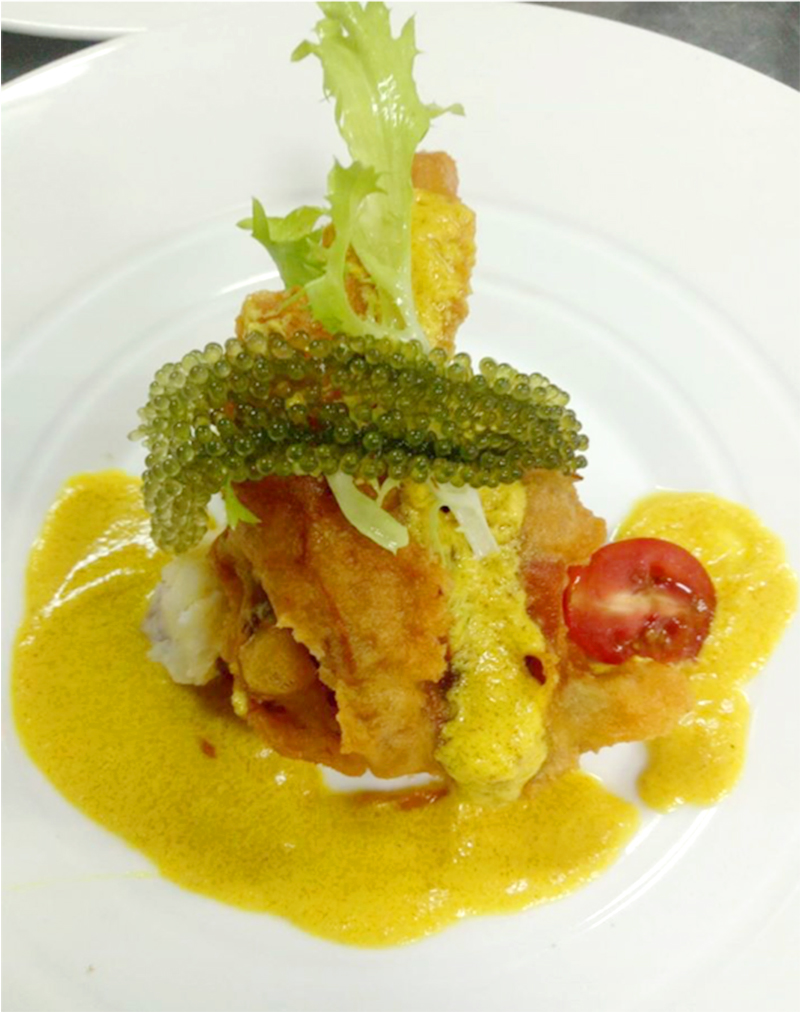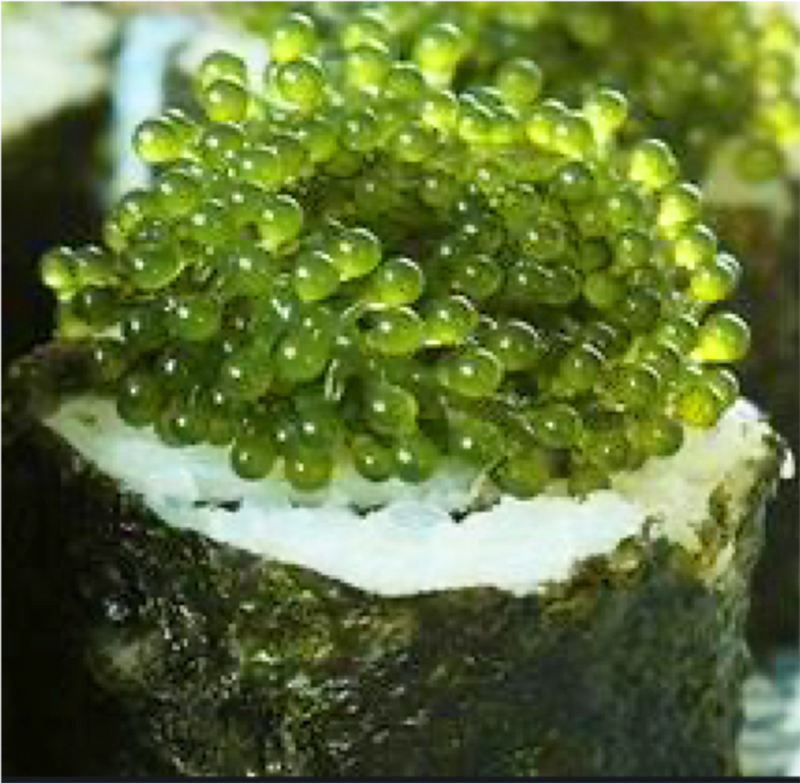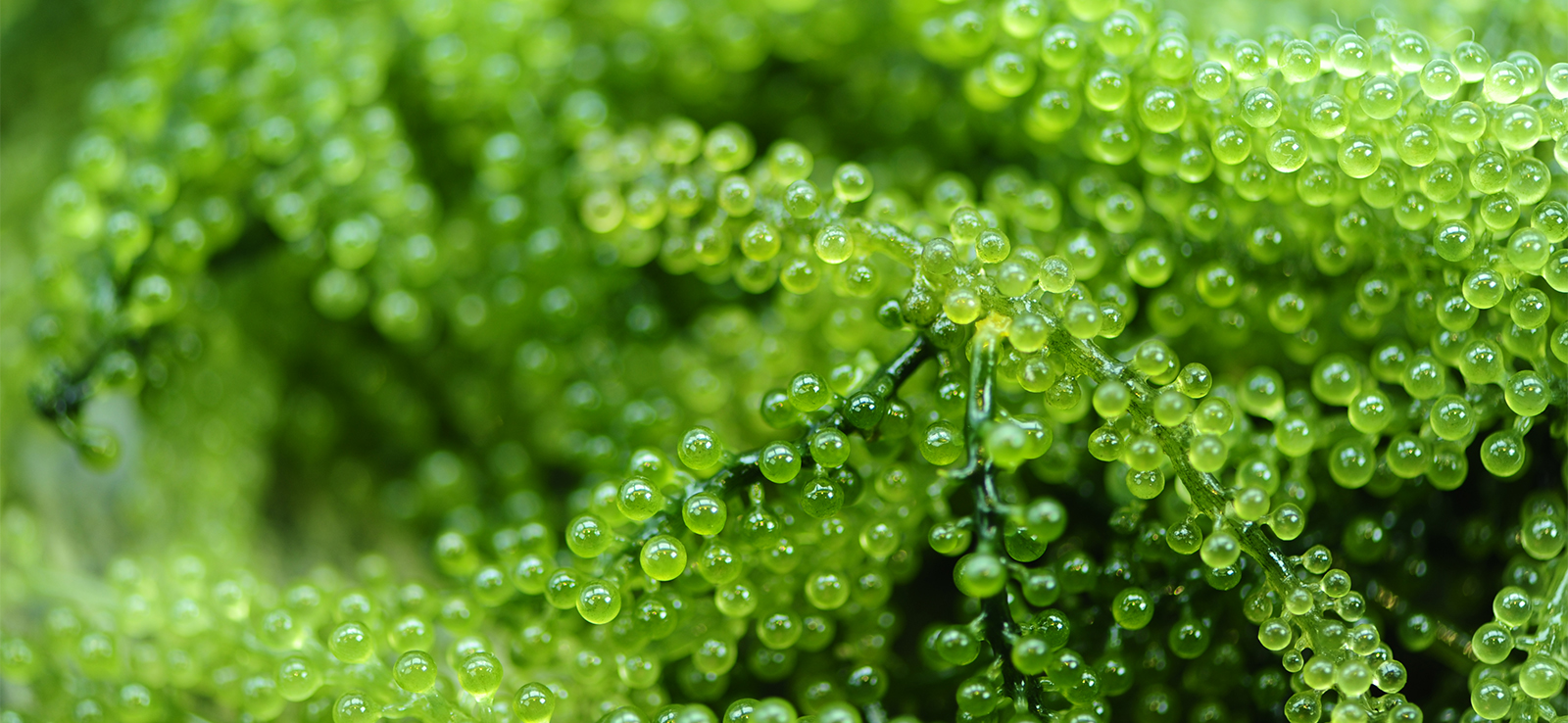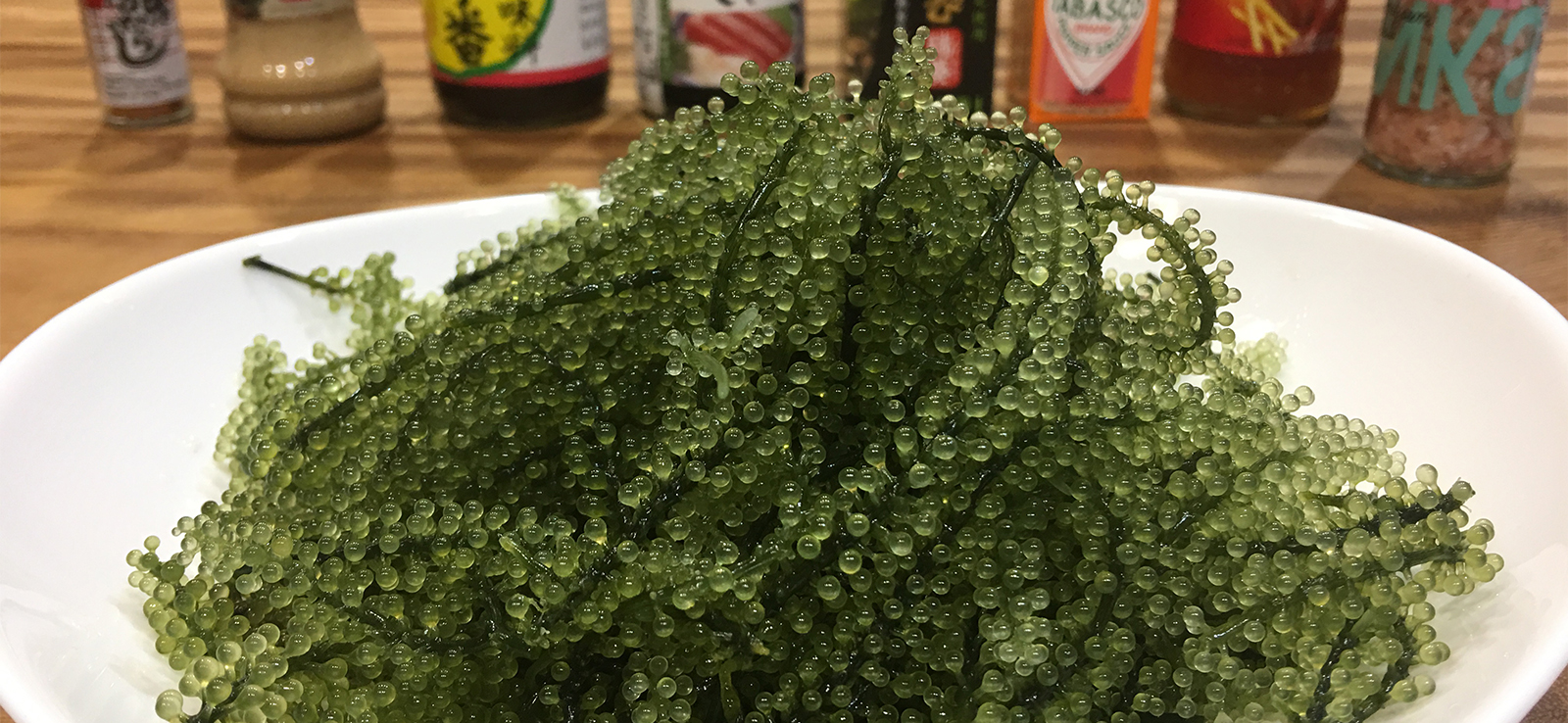~ Green Caviar Sea Treasure: Sea Grape ~
It's quite fortunate that we tried eating green caviar – sea grapes – under the recommendation of some Thai friends. It was a fresh and unique food that had we never eaten in Taiwan. As we gently chewed, the sticky collagen-filled sea grapes popped open. We have never forgotten the incredible taste of the pulp that burst from them. That's why we wanted to learn more about sea grapes; what kind of nutritional benefits and health effects could they offer?
Although we are a Gourmet Group, often going to different major well-renowned restaurants in Taiwan, we still couldn't find any traces of sea grapes. The ones that we occasionally ate in Taipei were too different from the taste of those we could eat abroad. Therefore, we called ourselves the “Gourmet Group” and decided to use what we had learned to create a wonderland in the midst of the green hills and clear waters of Thailand, where we started breeding sea grapes. We also decided to promote and sell sea grapes in Taiwan. It is our belief that everyone should be able to enjoy world-class natural health and foods that promote longevity.
Sea grapes originate from the waters south of the ancient islands of Okinawa, and are one of Okinawa's best-known natural commodities. The name "sea grapes" arises from the physical similarity to their land-based counterparts; their crystal clear appearance, their pale green color, and the way they grow in strings of filaments or "vines".
Seaweed polysaccharides, collagen, and dietary fiber account for 80% of the sea grapes' composition, and sea grapes nutritionally rich, abundant in minerals and vitamins, and contain unsaturated fatty acids, amino acids, algal polysaccharides, and other beneficial active substances. Among the 16 amino acids discovered in sea grapes, 11 are essential amino acids, including 7 kinds of amino acids that the human body cannot synthesize.
With respect to general nutrients, scientists have performed analyses on, and comparisons of, edible seaweed types. The crude protein content of sea grapes is 17.83%, higher than edible kelp (8.7%) and sea lettuce (15.6%). Sea grapes also have a higher crude protein content compared to land-grown vegetables, whose averages are 1.8% for leafy greens, 0.91% for fruits and vegetables, and 1.40% of grains and roots vegetables. Long-term consumption of sea grapes can promote anti-oxidation, blood purification, beauty, and immunity. It can also delay the aging process, activate brain cells and foster other beneficial effects. For vegetarians, it can also make up for the shortage of protein owing to the lack of protein in other vegetarian foods, maintain mineral and nutritional balance, and supplement physical strength. Compared to high-grade caviar or other healthy foods, sea grapes are richer in nutrients!
Our sea grapes are divided into two categories:
1. Fresh sea grapes: no need to reconstitute before eating. Intended for restaurants and hotels.
2. Salted Sea grapes: need to be reconstituted before eating. Intended for end consumers.
Sea Grape Analysis
| Component | Content (per 100g) | Component | Content (per 100g) |
|---|---|---|---|
| Calorific capacity | 4 calories | Phosphorus (P) | 0.28 mg |
| Crude fat | 0.05 g | Selenium (Se) | 2.2 μg |
| Crude protein | 0.39 g | Cobalt (Co) | 1.37 μg |
| Crude fiber | 0.18 g | Copper (Cu) | 8.65 μg |
| Total dietary fiber | 0.03 g | Linoleic acid | 6.51 mg |
| Carbohydrate | 0.60 g | α-Linolenic acid | 6.02 mg |
| Ash | 0.03 g | Arachidonic acid ARA | 2.52 mg |
| Total hydrolyzed amino acid | 0.23 g | Eicosapentaenoic acid EPA | 1.68 mg |
| Calcium (Ca) | 0.04 g | Docosahexaenoic Acid DHA | 0.40 mg |
| Magnesium (Mg) | 0.06 g | Polyunsaturated fatty acid | 17.64 mg |
| Potassium (K) | 0.04 g | Monounsaturated fat | 8.93 mg |
| sodium (Na) | 0.60 g | Saturated fatty acid | 24.85 mg |
| Iron (Fe) | 0.96 mg | Omega-3 fatty acids | 7.98 mg |
| manganese (Mn) | 0.09 mg | Vitamin B2 | 7.81 μg |
| Zinc (Zn) | 0.05 mg | Vitamin Eα | 63 μg |
Fresh sea grape v.s. Salted sea grape
Our sea grape is roughly divided into two categories:
1. Fresh sea grapes: no need to restore before eating, mainly for restaurants and hotels.
2. Salted Sea grapes: need to be restored before eating, mainly for consumers.
| Fresh sea grape | Salted sea grape | |
|---|---|---|
| Expires after | 5~7days | 180 days |
| Net quantity | 100g | 100g (> 250g after reconstitution ) |
| Requires reconstitution? | No | Requires reconstitution before consumption. |
| Potential clients | Restaurants, hotels, retail stores, end consumers | Restaurants, hotels, retail stores, end consumers |
| Storage method | Room-temperature storage only |
Can be stored at room temperature before opening. Requires refrigeration after opening. |
| Order Website |
Salted sea grape recovery teaching

Q&A
| Fresh sea grape | Salted sea grape |
|---|---|
 |
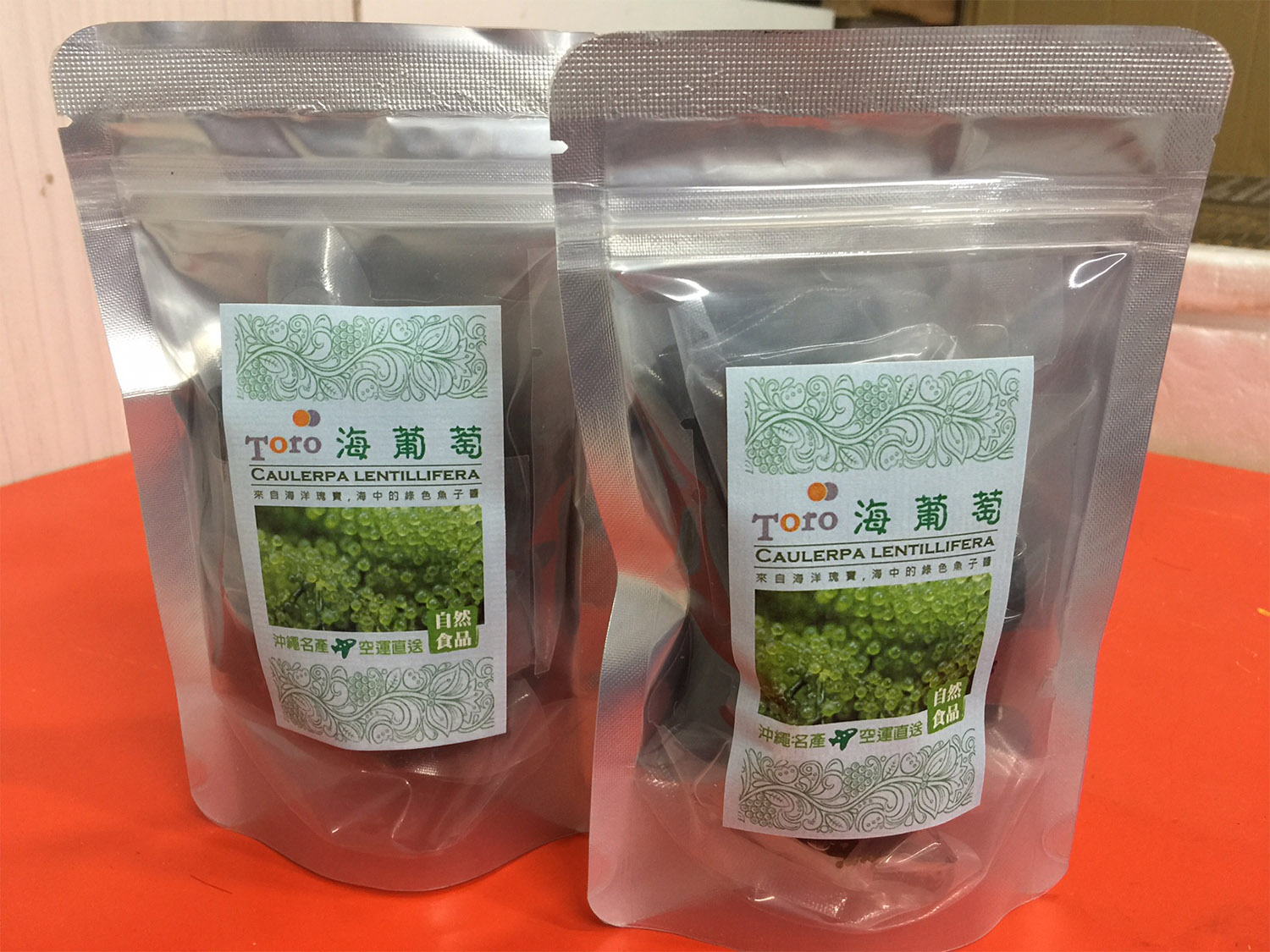 |
| Fresh sea grape | Salted sea grape |
|---|---|
| Fresh sea grapes are at their freshest for about 3 days, and so are best consumed within this period. | Salted sea grapes have an expiration date about 90 days from production; they are best consumed as early as possible. |
| Fresh sea grape | Salted sea grape |
|---|---|
| Store at room temperature (preferably 20~30 degrees), avoid exposure to direct sunlight or air drafts. Do not allow them to come into contact with fresh or salt water. |
When unopened, store sea grapes at room temperature (preferably 20~30 degrees), and avoid direct exposure to sunlight or air drafts. Do not allow them come into contact with fresh or salt water. |
| Fresh sea grape | Salted sea grape |
|---|---|
| Only wash sea grapes immediately before consumption. If not consumed, follow the storage directions above. | Only wash sea grapes immediately before consumption (or reconstitution). Seal the bag and follow the directions above for any remaining portion. |
| Fresh sea grape | Salted sea grape |
|---|---|
| After washing, consume within 1~2 hours. | After washing, consume within 10~30 minutes. |
Amino acids and fatty acids:Sea grapes help to lower blood pressure, relieve stress, inhibit cholesterol levels, prevent thrombosis and myocardial infarction, and prevent circulatory diseases. |
Inorganic elements:The sea grapes growing in sea water contain more than 45 kinds of inorganic elements, among which the content of sodium, potassium, iron and calcium is the most, which can provide human body more than land plants. Need, if human beings lack the above elements, the body function will be out of balance, so the daily intake of sea grapes can supplement inorganic elements. |
Vitamins:Sea grapes contain a variety of vitamins, mainly vitamins B12, C, E, biotin and niacin, which can prevent the occurrence of diseases such as metabolic disorders. |
Food fiber:Dietary fiber is a macromolecule with a polysaccharide structure. Moderate intake can lower blood pressure, cholesterol and blood sugar, and contribute to cardiovascular maintenance and anti-cancer effects. It can also help digestion and promote waste excretion. It has a whole bowel function and keeps you in shape. |
Polysaccharides:Sea grape has substances that enhance immunity and anti-cancer activity. Among them, fucoidan has been found to have anti-tumor and anti-coagulant activity, and also has enhanced leaching. The effect of cell activity. |
~ Sea Grape Creative cuisine ~
